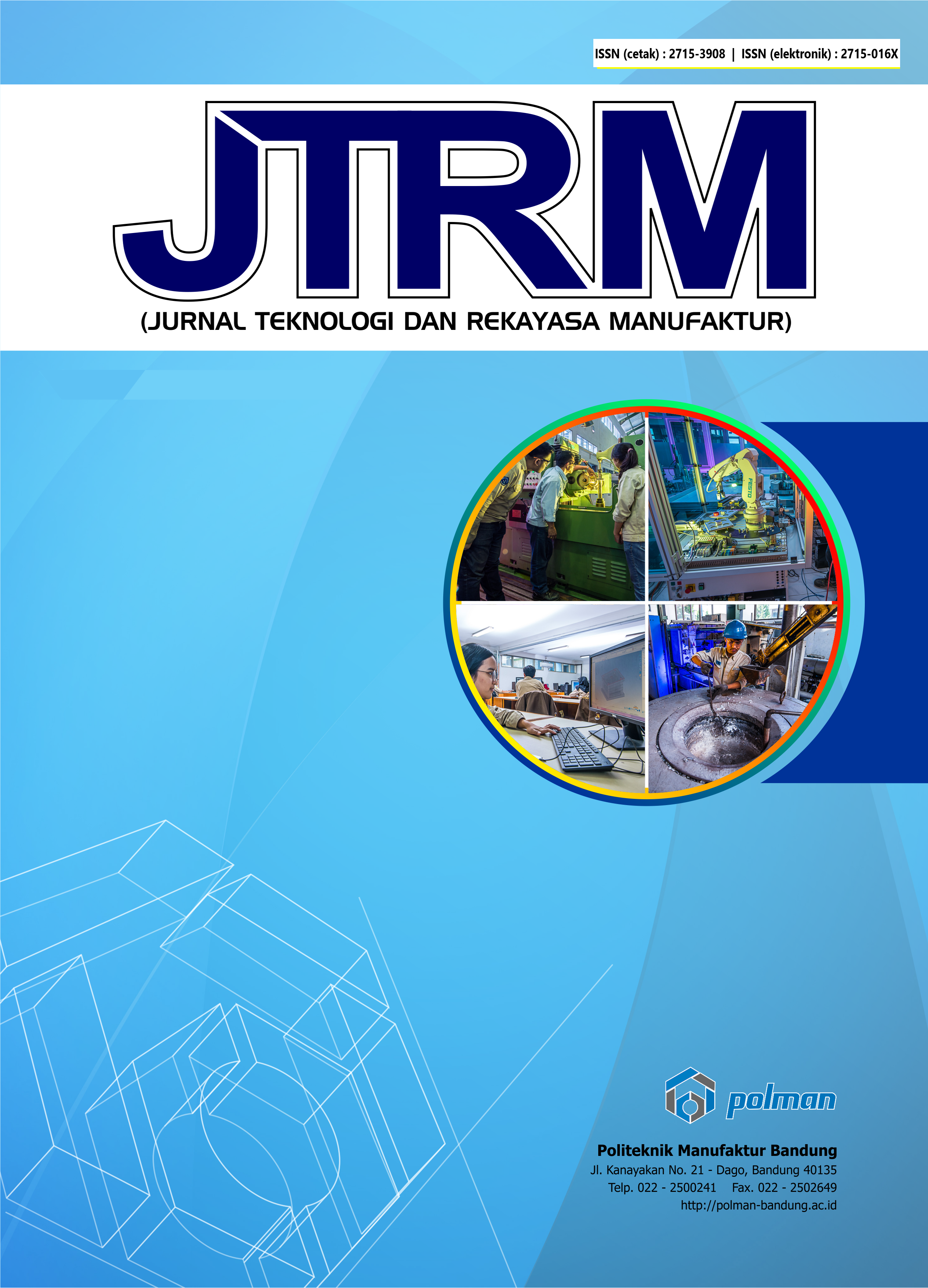Sistem Identifikasi Jumlah Produk Berbasis Pengolahan Citra dengan Algoritma YOLO pada Proses Pengepakan Industri Manufaktur
Main Article Content
Abstract
Machine vision is a technology commonly used in modern industry for image-based autonomous analysis and inspection. Machine vision helps the process of product analysis and inspection in the industry faster than manual analysis and inspection. This study applies machine vision to an image processing-based product number identification system in the manufacturing industry packing process using the YOLOv4 algorithm and evaluation of the confusion matrix system. The results of the identification are stored in a database and displayed on the website to facilitate the monitoring process. This system has carried out several tests, especially testing the main function of the system, namely product calculations, carried out 10x experiments. Then, testing variations in light intensity with a range of 20 – 225 lux and variations in height with a range of 48 – 68 cm with 10 trials each. From the tests that have been carried out, an evaluation of the confusion matrix is applied and produces an accuracy and precision of 100% and an error of 0%. The average computing speed of this system is 6.95 FPS with the help of CUDA.
Downloads
Article Details

This work is licensed under a Creative Commons Attribution-ShareAlike 4.0 International License.
Artikel yang diajukan untuk dipublikasikan pada JTRM (Jurnal Teknologi dan Rekayasa Manufaktur) ini adalah karya dari penulis dan/atau tim penulis yang memiliki pembahasan pada bidang sains dan teknologi. Naskah tersebut belum pernah dipublikasikan di Jurnal (media) apapun atau tidak sedang diajukan untuk dipublikasikan pada jurnal atau prosiding lain. Apabila terdapat duplikasi penerbitan, artikel akan dicabut/dihapus oleh Dewan Redaksi.
Nama dan alamat email yang dimasukkan pada laman JTRM (Jurnal Teknologi dan Rekayasa Manufaktur) hanya akan digunakan sebatas kepentingan penerbitan artikel pada laman JTRM (https://jtrm.polman-bandung.ac.id/) dan tidak akan diberikan kepada pihak lain untuk kepentingan apapun.
References
[2] “Machine vision Systems Capabilities, Uses, And Applications.” https://www.lacconveyors.co.uk/machine-vision-systems-provided/ (accessed Jan. 10, 2023).
[3] “What Is Machine vision and How Does it Work?” https://www.techtarget.com/searchenterpriseai/definition/machine-vision-computer-vision (accessed Jan. 10, 2023).
[4] J. Beyerer, F. P. León, and C. Frese, Machine vision: Automated visual inspection: Theory, practice and applications. 2015. doi: 10.1007/978-3-662-47794-6.
[5] V. Nandini, R. Deepak Vishal, C. Arun Prakash, and S. Aishwarya, “A Review on Applications of Machine vision Systems in Industries,” Indian J. Sci. Technol., vol. 9, no. 48, 2016, doi: 10.17485/ijst/2016/v9i48/108433.
[6] M. A. Khalim, A. H. Kurniawan, and C. Supriadi, “Sistem informasi penghitungan hasil produk berbasis internet of things,” vol. 2, no. 1, 2021.
[7] M. Waterfall, “Penerapan Metodologi Waterfall Pada Rancangan,” vol. 11, no. 1, pp. 1–12.
[8] F. Mahardika, K. A. Purwanto, and D. I. Surya Saputra, “Implementasi Metode Waterfall pada Proses Digitalisasi Citra Analog,” VOLT J. Ilm. Pendidik. Tek. Elektro, vol. 2, no. 1, p. 63, 2017, doi: 10.30870/volt.v2i1.948.
[9] D. Normawati and S. A. Prayogi, “Implementasi Naïve Bayes Classifier Dan Confusion Matrix Pada Analisis Sentimen Berbasis Teks Pada Twitter,” J-SAKTI (Jurnal Sains Komput. dan Inform., vol. 5, no. 2, pp. 697–711, 2021.

